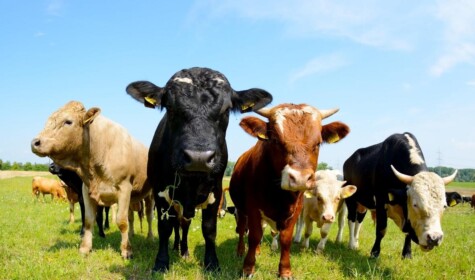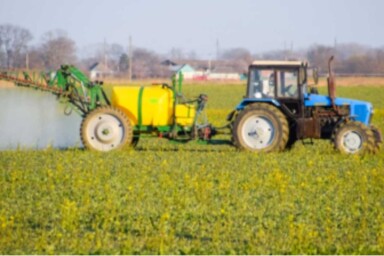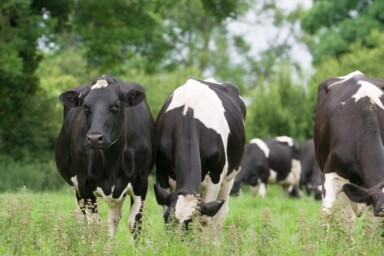Earlier this month, global leaders met in Scotland to discuss the future of our climate. While many activists wanted to see stronger commitments coming out of COP26, the Glasgow Agreement is a positive step that demonstrates a genuine hope for the planet. However, the question now becomes how to deliver against those targets.
The target for reducing emissions is known as the Nationally Determined Contribution (NDC) and is put forward by each country. It demonstrates how that national economy will transition to deliver the greenhouse gas reduction to which they committed. The UK has committed to reduce economy-wide greenhouse gas emissions by at least 68% by 2030, compared to 1990 levels.
The CCC
The method by which the UK will deliver the 68% was outlined by the Committee on Climate Change (CCC) in their 6th Carbon Budget. However, there are a number of concerns over the proposed methods for lowering net emissions, specifically within the farming and land use sector. Their approach fails to recognise the incredible power of sustainable farming (and specifically agroecology) to be a climate solution and how it helps to sequester carbon.
As a result, in October, the Soil Association, Pasture For Life Association, Floodplain Meadows Partnership and the Sustainable Food Trust published a report challenging the CCC’s thinking and outlining how sustainable farming can deliver reduced emissions. The report considers an alternative approach that recognises the synergistic nature of economic, environmental and social factors. This would promote nature recovery, public health and climate mitigation and adaptation, alongside achieving reductions in net emissions.
Considering land management as a holistic system
The CCC’s vision rests on sustainable intensification (a ‘land-sparing’ approach) to meet demand for food production and reduce overall agricultural land use. However, this siloed approach is flawed. It would push further industrialisation on the area of land that wasn’t ‘spared’, with more pressure on yields that could possibly lead to increased use of synthetic nitrogen fertilisers and pesticides. For livestock farmers, this could take the shape of increased stocking density and antibiotic use with subsequent deterioration in animal welfare standards. Furthermore, the CCC does not adequately take into account the increasingly unpredictable climate and weather events, which will dramatically impact yield and productivity.
Instead, the report should seek to address the source of the issue. Using agroecological principles and land management practices, total agricultural land could still be reduced, but not to the detriment of biodiversity, nature recovery and soil health. The French research group IDDRI have produced comprehensive modelling demonstrating the potential for agroecology at the UK level to reduce emissions by 38% by 2030 and 60% by 2050, while also allowing for 7.5% of agricultural land to be released for rewilding and nature recovery.
It would be preferable to utilise nature-based solutions (NbS) to tackle climate change by sequestering carbon while allowing biodiversity to recover, such as species-rich grasslands and agroforestry. Species-rich grasslands, including floodplain meadows and upland hay meadows, can sequester carbon at a higher rate than both grass monocultures and cropland, helping to reduce agricultural emissions, restore biodiversity and produce more environmentally sustainable meat and healthier animals. Similarly, agroforestry (the production of trees and agricultural crops on the same piece of land) can sequester significant amounts of carbon without the wholesale loss of agricultural production, bringing food and nutrition security, diversified income and more green jobs and better public health benefits by growing more fresh produce.
Distinguishing between sustainable and unsustainable producers
It is clear that overconsumption of industrially produced meat and dairy is contributing to both public health issues and to climate change. While it’s admirable to reduce overall meat and dairy consumption, it is essential to differentiate between livestock that are part of the problem, and those that are part of the solution. Sustainable producers should be highlighted and adequately distinguished from those farming intensively, alongside reducing overall consumption.
Metrics for methane
However, it is also critical that we use the best climate science and ensure that the baseline figures and data are accurate. The CCC are currently using an outdated methodology for assessing the warming impact of methane. The GWP100 equivalence metric is flawed as it treats methane as a ‘stock’ greenhouse gas which accumulates in the atmosphere in the same way as long-lived gases like CO2 or N2O. In fact, methane is short-lived, and its impact on temperature depends largely on whether the rate of emissions is rising (leading to rapid warming), stable (leading to broadly stable temperatures) or falling (which causes a cooling effect). Consequently, GWP*, the updated version of GWP100 should be adopted. The GWP* provides a far more accurate representation of the impact of methane emissions on temperature changes and would allow for better climate modelling.
What steps should be taken?
Government should incorporate the wider direct and indirect implications of changes to land management and farming practices in any policymaking towards climate commitments. Net emissions, ecosystem services and public health should be interconnected through holistic policy making, in the pursuit of developing an integrated and sustainable land management system. Importantly, the hypothetical yield and emissions figures used as a baseline for CCC scenarios should be reassessed to more accurately reflect the impact of climate change on yields. It is only through doing this that the UK Government can begin to create a healthy and sustainable food system for all people, that not only reflects the realities of climate but can help to fight the crisis.
The full report is available here.






